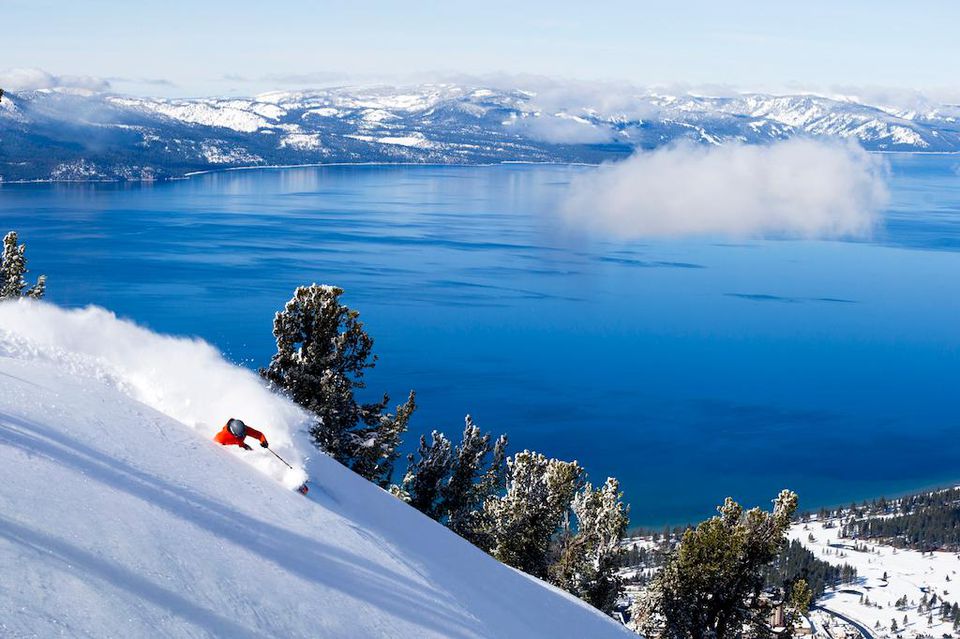 Those who live at and visit Lake Tahoe should be concerned with what’s contained in the independent peer review conducted by the Tahoe Science Advisory Council (TSAC). Equally troubling is the Tahoe Regional Planning Agency’s lack of transparency in addressing these findings within the 2023 Environmental Threshold Report and public presentations.
Those who live at and visit Lake Tahoe should be concerned with what’s contained in the independent peer review conducted by the Tahoe Science Advisory Council (TSAC). Equally troubling is the Tahoe Regional Planning Agency’s lack of transparency in addressing these findings within the 2023 Environmental Threshold Report and public presentations.
The TSAC review identified major scientific and methodological flaws in TRPA’s environmental assessments, including data inconsistencies, outdated references, and vague status determinations, all of which undermine the credibility of TRPA’s evaluation process.
Despite knowing these concerns, TRPA’s staff presentations to the governing board and public failed to acknowledge the peer review findings, limiting public awareness and engagement. While TRPA staff has attempted to respond since I raised these issues, the agency’s lack of transparency restricts informed discussions about protecting Tahoe’s environmental health. The issues demand additional scientific resources and funding.
TSAC’s peer review summary states: “The disconnect between some standards and management activities reinforces the need (identified by previous threshold evaluation reviews) to revisit the threshold standard system … and data sources … for air quality, noise, recreation, vegetation preservation, and water quality … to ensure TRPA’s monitoring programs can best inform implementation actions and monitor the impacts of those investments.”
The public must demand action from TRPA to:
- Publicly acknowledge the TSAC Peer Review and delineate management activities from measurable indicators in their presentations
- Incorporate key scientific recommendations to improve data accuracy
- Correct data inconsistencies
- Fund additional scientific resources for reliable environmental monitoring.
As an example, with the sustainable recreation and transportation indicators, the TSAC Peer Review exposes major gaps in TRPA’s monitoring of recreation in the Basin. The TRPA Regional Plan actually states that recreation opportunities must keep pace with public demand, but finds no measurable thresholds or formal tracking of capacity over time.
Some key concerns include:
- No defined targets for monitoring recreation capacity
- No tracking of visitor capacity changes, despite 28 facility improvements (2020 to 2023)
- No consideration of population increases in Truckee, Reno, and Carson City
- Insufficient survey data post Covid
The review recommends a carrying capacity study (CCS) to ensure recreation is managed sustainably without harming Tahoe’s environment.
The TSAC Peer Review of water quality indicators reveal serious inconsistencies in data collection, methodology, and reporting:
- Different methods are used to measure phytoplankton productivity in nearshore and deep-water zones, making comparisons impossible.
- Conflicting tributary monitoring data. Some reports reference seven monitored streams, others list only five in California.
- Phosphorus assessments contradict reality. Outdated studies claim compliance, while newer data shows ongoing excedances.
The review calls for standardized methodologies, transparency, and updated data sources to ensure science-driven water quality management. TRPA has struggled with transparency, often prioritizing housing and tourism, which are important but should not outweigh its core mission of protecting Lake Tahoe under the bistate compact.
The TSAC Peer Review and public demand highlight the need for a CCS, a science-based, Basin-wide assessment to determine how much human activity Tahoe can sustain without degrading its environment or infrastructure. Unlike project-specific studies, a CCS would provide a proactive strategy for sustainable growth.
Why a carrying capacity study matters:
- Establishes population and visitor parameters to uphold protection of Tahoe’s environment
- Guides long-term management strategies (e.g., visitor quotas, transit expansion)
- Provides essential data for regional plan updates
- Supports wildfire evacuation planning, a critical safety issue
Tahoe’s future depends on responsible planning. Isn’t it time TRPA commit to a science-driven CCS? To take action, go to TRPA’s threshold evaluation feedback form and insist on a Basin-wide carrying capacity study. It takes less than 5 minutes. Tahoe’s future depends on it.
~ Niobe Burden Austere, a Lake Tahoe advocate since 1998, is a professional photographer with 35-plus years of experience, now focusing on conservation photography. With a global perspective from a decade abroad, she closely follows TRPA policies and was recently elected to the Sierra Club Tahoe Area Group’s executive committee.

